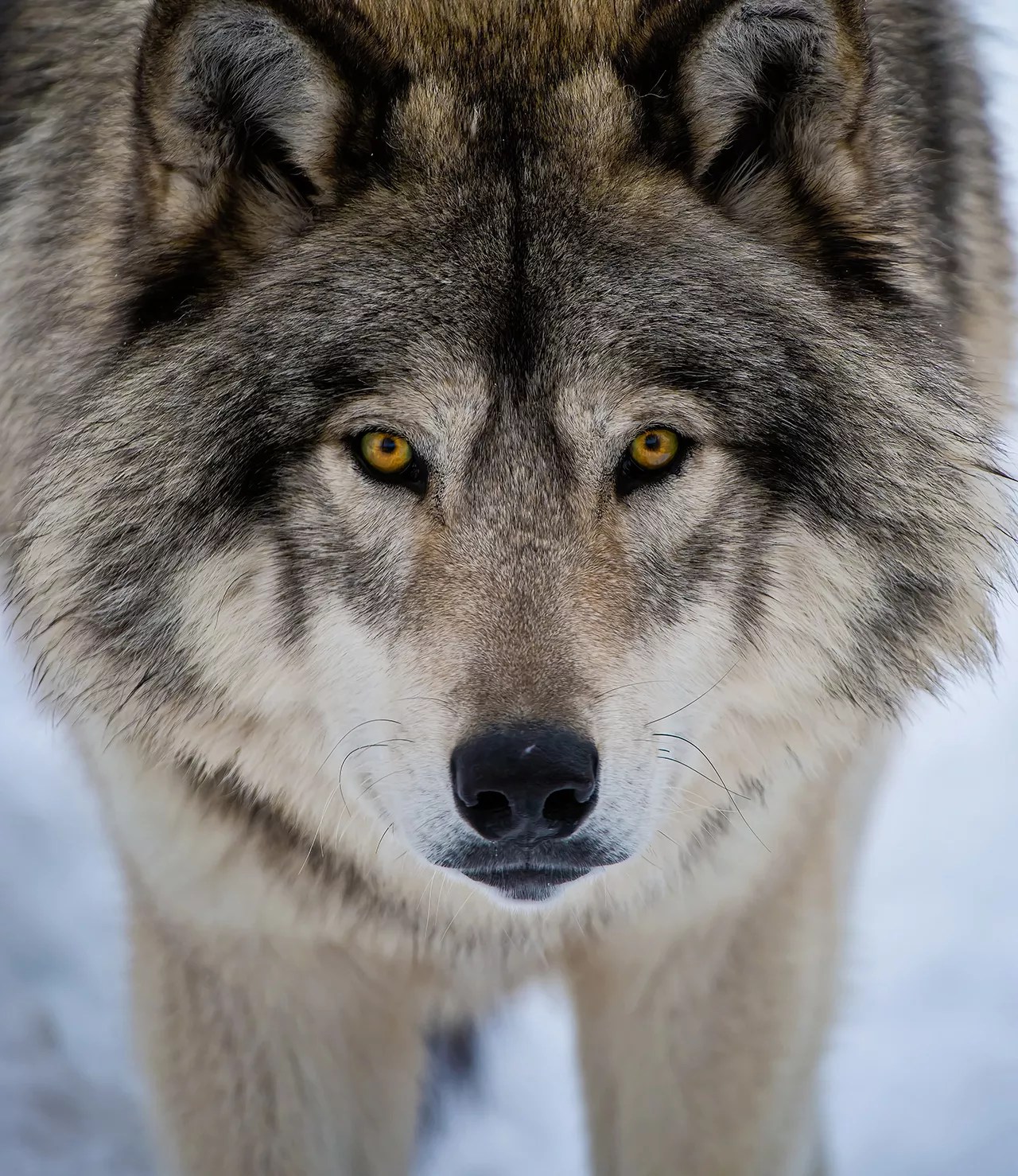
Getty Images/Michael Cummings

Audio By Carbonatix
Rob Edward saw his first wolf in the wild in 1991, when it trotted silently across a back road just minutes from a highway in northern British Columbia. Edward was helping his brother transfer horses from North Dakota to Alaska, and remembers being awestruck by the sight of what he now describes as a “large canid.” But the moment was bittersweet: He was also devastated by the environmental destruction wreaked on the landscape.
“The timber companies left these green strips of about 100 yards on either side of the road, but any time you get an elevation change, you can look over it,” he says. “They just leveled everything. It was so obvious that the green strips were complete greenwashing. They were simply meant to keep peoples’ minds off of the fact that the forests were gone.”
He worried that North America’s gray wolves could be next.
“European conquest raced across this continent like a pandemic, and it took no prisoners,” Edward says.
“Everything was a resource to be used, and anything that competed with white people using those resources had to be eliminated. What happened to wolves was exactly the same kind of oppressive, shortsighted exertion of dominion that worked to eliminate native peoples. That is something that I believe we have a duty to rectify.”
He’s been trying to do exactly that for almost thirty years, fighting to bring the gray wolf back to Colorado.
And this November, if the state’s voters pass Proposition 114, he might finally be successful.
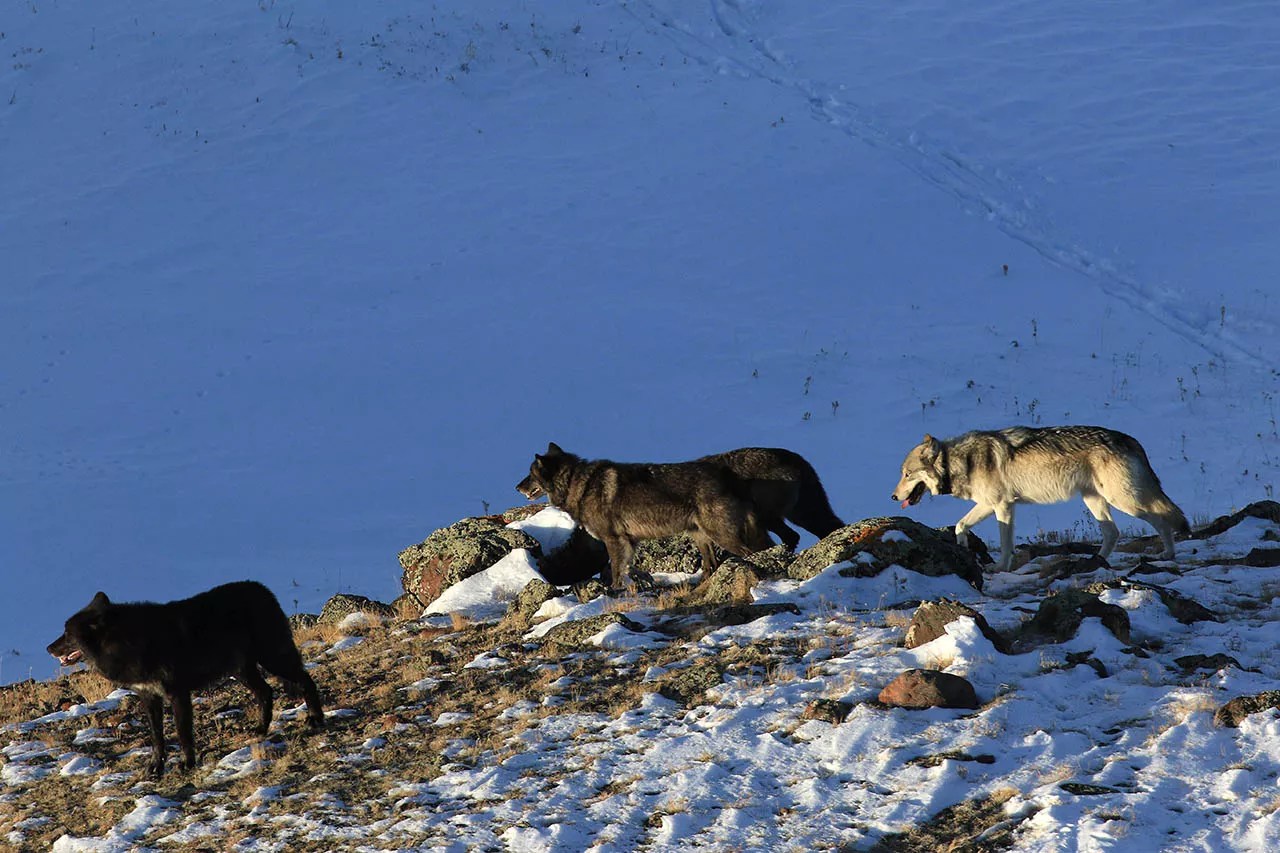
Wolf packs can now be found in Yellowstone National Park.
Dan Stahler
Rob Edward grew up in Idaho Falls. He spent his summers just west of Yellowstone National Park, in an area of Idaho called Island Park, where his mother showed him how to dip nightcrawlers in the river for trout, and he fell in love with the outdoors.
“It keeps my heart beating,” he says. “Being in a forested environment makes me feel like everything is going to be okay.”
After graduating from high school, he joined the Air Force. It was his ticket out of his small home town – and with no looming international crises, he did his time in public health service, helping with food-facility sanitation, STD interviews, tuberculosis control and respirator fitting for mechanics. After four years, with the Air Force paying his college tuition, Edward enrolled at the University of Massachusetts at Boston. He started out studying biology, but soon realized his focus was on “the politics of ecology” and switched majors to political science.
By the time he graduated, he knew that he wanted to help make the world a better place.
“At the same time as I was coming out of college, I was interested in what had transpired in the last 200-plus years with the indigenous cultures of this continent,” he explains. “I drew a connection with what had happened with indigenous cultures and the eradication of the buffalo, which was done to help eradicate native peoples, and anything that seemed to compete with the dominant paradigm.”
Gray wolves appeared to be going the way of the buffalo. They’d once roamed wild in nearly all of North America, but as white settlers moved west, they’d decimated the bison, elk and deer herds – crucial sources of prey for gray wolves. Instead, wolves made do with they could find: livestock. Ranchers retaliated, and wolves were then “systematically eradicated by shooting, trapping, and poisoning,” according to the Colorado Parks and Wildlife (CPW) website. One such method of eradication was a bounty system instituted in 1869 that gave “wolfers” a financial incentive to kill the animals.
The last wolf native to Colorado was killed by a leghold trap in Conejos County in 1945.
“European conquest raced across this continent like a pandemic, and it took no prisoners.”
In 1974, gray wolves were declared extirpated everywhere in the lower 48 states except for Minnesota, where the remaining wolves were protected under the Endangered Species Act.
After graduating from college in 1991, Edward did a short volunteer stint helping a Navajo Nation family shepherd a flock of sheep. When he returned home to Idaho, he picked up a copy of Earth First! Journal, an environmentalist publication, and saw an ad for a position at Sinapu, an advocacy organization for large-predator restoration started by Michael Robinson when he was an English grad student at the University of Colorado Boulder. Edward faxed over his résumé, got the job, and moved to Boulder in 1994.
“We were just a tiny, scrappy nonprofit,” recalls Edward. “Michael had already tabled the crap out of Boulder and gotten handwritten letters sent to then-Congressman David Skaggs, urging him to appropriate money to study the potential for wolf reintroduction in Colorado. And he did. It was the direct result of on-the-ground, grassroots activism. I wanted to be a part of that.”
The resulting study highlighted four areas with ideal habitats for sustaining gray wolf populations: the San Juan Mountains in southwestern Colorado, Rocky Mountain National Park, the Grand Mesa and the “Northern Core,” which encompasses the White River and Routt national forests and Flat Tops Wilderness.
Edward’s initial role at Sinapu involved driving around the state doing educational slideshows and programs in support of wolf reintroduction. Most – but not all – of the people he met were supportive.
“I had one 6′ 4″, 200-pound cowboy at an outdoor music festival in Pagosa Springs who kept coming back to my table, unbuckling his sidearm and telling me that ‘the only good wolf is a dead wolf,'” Edward recalls. “He thought the same thing about those who wanted to bring wolves back. He tried to intimidate me multiple times. I was just like, ‘You know, everyone has a right to their opinion, but I don’t think it needs to come to that!'”
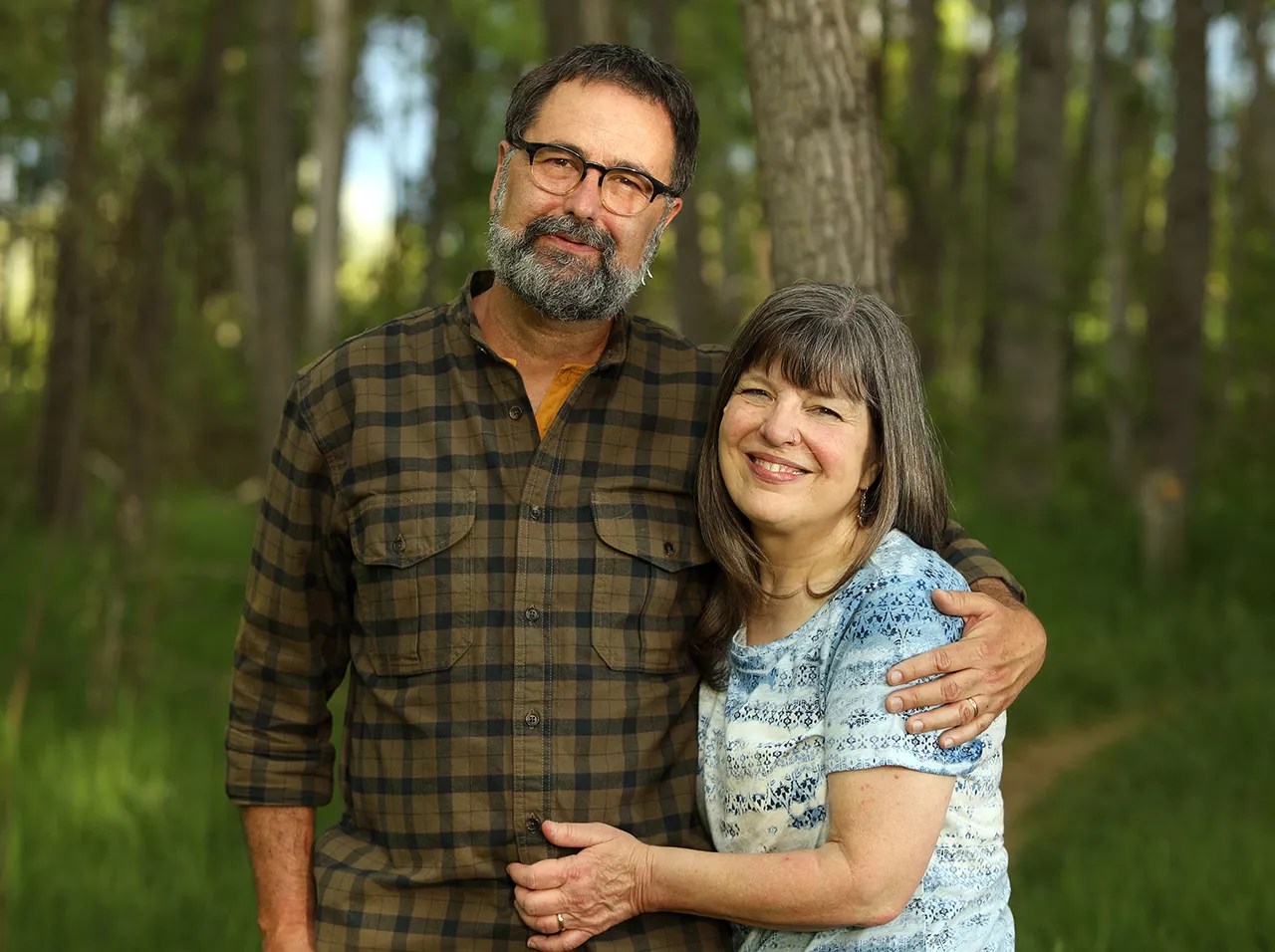
Rob and Anne Edward are self-described “wolf nerds.”
Sarah Boyum
Meanwhile, the progressive enclave of Boulder was a haven for wolf lovers. Edward took on more administrative responsibilities and helped manage a rotating cast of volunteers who supported Sinapu’s work, including his soon-to-be wife, Anne, who’d moved to Colorado after growing up on a farm in rural Pennsylvania.
“He’s a fiery little dude,” Anne says of her husband. “I tend to be the one who’ll be like, ‘It’ll be okay. Just calm down.'”
Edward also served as a spokesperson for the organization, and continued his advocacy both at a grassroots level and more publicly, developing the communication and organizing skills he’s now utilizing to bring Proposition 114 to the finish line. Sinapu was at the forefront of the fight for wolf reintroduction in 2009, when the organization merged with Santa Fe-based Wild Earth Guardians. That September, Edward stepped away from the day-to-day work of a nonprofit and took a corporate job in the medical device industry where Anne worked. But his passion for wolves continued unabated, and he now is the volunteer president of Rocky Mountain Wolf Action Fund as well as the Rocky Mountain Wolf Project, a distinct but interrelated organization that focuses on outreach and education.
“The absence of wolves leaves landscapes vulnerable and degraded,” explains Edward as he drinks an iced mocha latte near his home in Louisville. He’s wearing a patterned mask, Carhartt jeans and stud earrings in his left ear; his forearms are streaked with colorful abstract tattoos. Anne is with him; they describe themselves as “wolf nerds.”
“It’s been a real slog to get the question on the ballot,” Edward says. “We’ve been involved in this forever, and we’re really excited to see it take shape.”
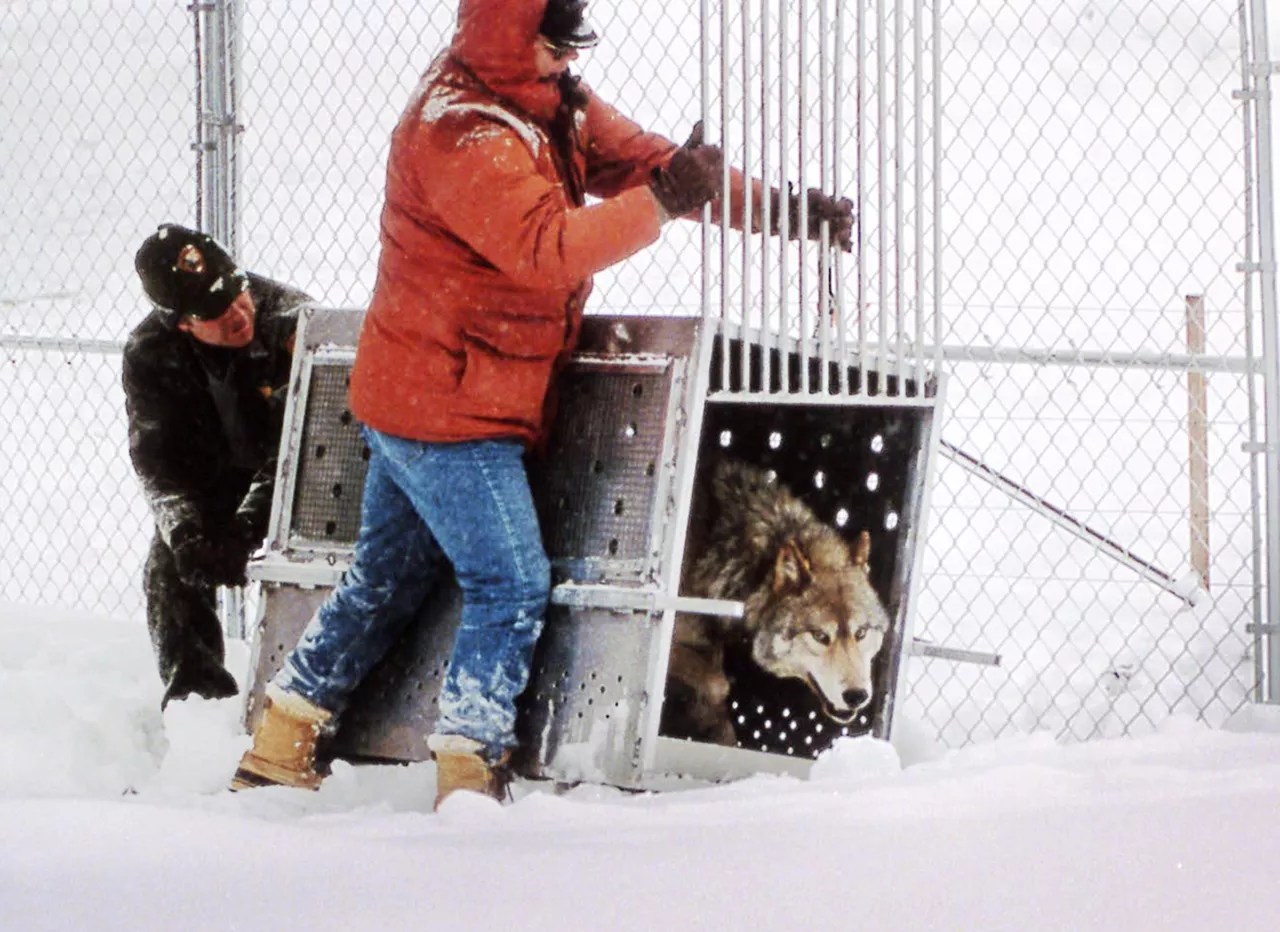
A wolf release by the National Park Service in 1995.
National Park Service
While Edward fought for wolf reintroduction in Colorado, wild wolves were already returning to other parts of the West. In 1986, wolves from Canada moved into northern Montana. The next year, the U.S. Fish and Wildlife Service (FWS) developed a plan to foster the natural recovery of wolves in Montana, which led to their reintroduction in Idaho, too. In 1995, 29 gray wolves were captured in Alberta, Canada; fifteen were released in central Idaho and fourteen in Yellowstone.
Mike Phillips, who now serves as director of the Turner Endangered Species Fund, was a young biologist who helped lead the National Park Service’s (NPS) wolf reintroduction initiative in Yellowstone. His efforts worked: With the addition of a handful of gray wolves from Canada, the wolf population in the northern Rockies shot up to over 1,645 wolves in 217 distinct packs by the end of 2008.
“Wolves were gone for no good reason. They were driven to extinction for no good reason,” says Phillips, who pauses between sentences for dramatic effect. “Their destruction represents a great ecological wrong. Their restoration represents a great ecological right.
“A more complete assemblage of native species is more balanced than a lesser assemblage,” he adds. “I’d liken it to a soccer game. You can certainly play soccer without a goalkeeper, but your team is less balanced than it is with one. Nature can operate without gray wolves, but it will not operate as balanced. It would be the ultimate act of hubris to conclude that the original lineup of species was somehow inappropriate.”
Over the next decade, the FWS focused on restoring gray wolf populations in the northern Rockies and the Great Lakes, where wolf populations in Minnesota recovered and spread to Wisconsin and Michigan. Meanwhile, genetically distinct Mexican wolves were reintroduced in the Southwestern states of New Mexico and Arizona. To Phillips, it seemed natural that Colorado would be next in line – and he assumed the FWS would extend its efforts here, bringing wolves back under the authority of the Endangered Species Act once it finished the job in other places. But so far, the FWS hasn’t gotten to Colorado – and has given no real signs that it plans to do so in the future.
“Colorado represents the last great reintroduction theater that will not be occupied simply by wolves wandering in on their own,” says Phillips. “It’s the final relay leg to connect wolves from the Arctic to Mexico. The baton is in our hands.”
“Wolves were gone for no good reason. They were driven to extinction for no good reason.”
Some wolves have already wandered into Colorado on their own. A lone wolf made her way down from Yellowstone in 2004 and was killed by a car on Interstate 70 in Clear Creek County, just thirty miles west of Denver. After that, Edward joined the newly formed CPW Wolf Management Working Group, which convened interested parties – ranchers, biologists, hunters, wolf lovers and county commissioners – to consider what might happen if more wolves arrived in Colorado. Edward pushed for reintroduction, but was shot down. Ultimately, the group concluded that if wolves came on their own, they would be allowed to roam freely. Any potential problems with livestock would be dealt with on a one-off basis; no bounties would be paid.
This past January, CPW confirmed the presence of a pack of six wolves in Moffatt County – just a month after the Rocky Mountain Wolf Action Fund submitted about 210,000 signatures on Proposition 114 (initially known as Initiative 107) petitions to the Colorado Secretary of State’s Office. “This is a historic sighting. While lone wolves have visited our state periodically, including last fall, this is very likely the first pack to call our state home since the 1930s. I am honored to welcome our canine friends back to Colorado after their long absence,” Governor Jared Polis said in a press release.
The sighting wasn’t enough to persuade 114’s proponents to drop their campaign, however, and the proposition easily made the November ballot, with 139,333 signatures deemed valid, significantly more than the 124,632 required.
In June, a wolf puppy was spotted in northwest Colorado. But according to Edward, there aren’t enough unrelated wolves in the state to develop a stable, lasting population. Without that, Phillips points out, we won’t see the potential ecological effects that wolves could bring.
“Gray wolves can be great ecological engineers,” he explains. “They create changes in the natural system that can trickle through the trophic structure. We’ve seen that in parts of Yellowstone National Park. We’ve seen that gray wolves can contribute to a trophic cascade in areas where they are fairly common for an extended time.”
“Trophic cascade” is an ecological term for the chain effect triggered by the addition or removal of a top predator in an ecosystem. In the case of gray wolves, their introduction would put increased predatory pressure on elk, deer and moose populations, which some biologists say could be a good thing. In Yellowstone before wolves were reintroduced, for example, high elk populations led to the decimation of willow stands along streams. Wolves not only put elk populations in check, but they disperse them into smaller herds and keep them on the move. In Yellowstone, this allowed the willow to recover, which led to the resurgence of beavers that depend on willow stands, which led to a host of other positive ecological changes.
“We’re here because we’ve exhausted all other options for getting wolves on the ground.”
Places in Colorado that exhibit overgrazing in the riparian habitat would benefit from wolf reintroduction, Phillips notes. The NPS currently uses fencing to protect against elk overgrazing in Rocky Mountain National Park; wolves would be a much more natural form of wildlife control, he suggests.
Still, by the early 2010s, it became apparent that the FWS considered its job finished. Happy with the conservation success stories of wolf reintroduction in the northern Rockies and the Great Lakes regions, the agency proposed taking the gray wolf off the Endangered Species list entirely in 2013.
That concerned Edward and Phillips, who held a series of meetings at the Denver Zoo – first in 2014 and again in 2016, when they plotted a last-ditch effort to bring wolves back to Colorado through a ballot initiative. Phillips contributed his biological expertise to the campaign, while Edward brought the organizing prowess he’d gained during years in the nonprofit world. He oversaw the development of the proposition, working with experts including lawyer Mark Grueskin at Recht Kornfeld PC and Rick Ridder of the progressive campaign consulting firm RBI Strategies, as well as scientists and conservation groups, to make sure the intent of the proposition remained on target. It calls for Colorado Parks and Wildlife to develop and implement a science-based plan to reintroduce wolves in Colorado by the end of 2023, one designed to create a self-sustaining wolf population. Any potential problems with livestock will be dealt with through fair compensation.
After the language passed muster with the state, the Rocky Mountain Wolf Action Fund led a team of volunteers and paid signature collectors, who hit the streets in June 2019 with Proposition 114 petitions; they turned the signatures in last December.
Putting this decision to a popular vote is an unprecedented move; in all other states where wolves have been reintroduced, the directive came from the federal government through the FWS. But Edward says they had no other choice.
“We’re here because we’ve exhausted all other options for getting wolves on the ground,” says Edward.
“A lot of credit goes to Rob for understanding that this was the appropriate play,” says Phillips. “Rob’s work is a beautiful expression of Americanism. Some would have you pick at the notion that it’s ‘ballot box biology.’ That’s a bullshit claim for anyone who would actually take the time to read Proposition 114. All it really does is establish an aspirational goal – or not.
“It’s worded to celebrate good science and the expertise of CPW,” he adds. “It’s also worded to acknowledge the authority of the electors. If that is not as American as mom’s apple pie and baseball, then I don’t know what it means to be an American.”
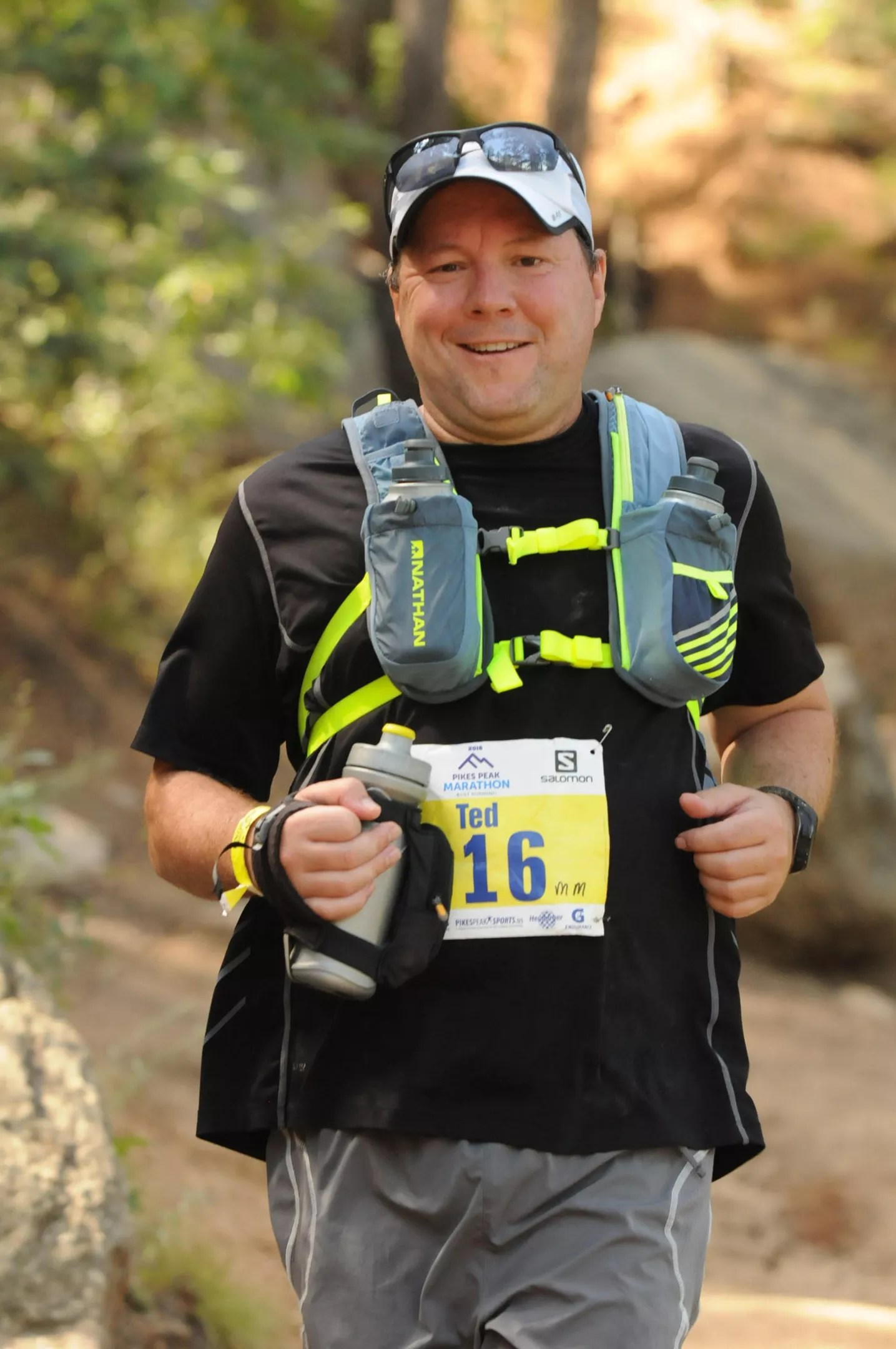
Ted Harvey is leading the fight against Colorado reintroducing wolves in the state.
Courtesy of Ted Harvey
Ted Harvey, the campaign director for Stop the Wolf PAC, is Edward’s counterpart in the fight against 114.
Like Edward, Harvey is an avid outdoorsman, a hunter and trail runner who has summited many of the state’s fourteeners. Like Edward, he lives on the state’s Front Range, in Highlands Ranch. And like Edward, he has dedicated his life to causes in which he believes. Harvey joined the Reagan administration as a 22-year-old staffer and went on to spend fourteen years as a conservative leader in the Colorado Legislature representing Douglas County, picking up a master’s degree in public administration from the University of Colorado Denver’s Graduate School of Public Affairs along the way. In addition to his work with Stop the Wolf PAC, he currently serves as the chairman of the Committee to Defend the President, a super PAC supporting President Donald Trump’s re-election.
But unlike Edward, Harvey doesn’t want to see the gray wolf back in Colorado. Early this year, a group of “outdoor outfitters from across the state” asked him to head the campaign against the “introduction of the Canadian Gray Wolf, he explains. (Harvey makes it a point to always refer to the gray wolf as the “Canadian Gray Wolf.”) According to recent campaign finance reports, Stop the Wolf PAC and Coloradans Protecting Wildlife, another anti-wolf group, have raised $388,619 to campaign against the initiative. Meanwhile, the Rocky Mountain Wolf Action Fund has raised over $1.5 million.
“I can guarantee you who’s going to win these conflicts. It’s not going to be the wolf.”
“We’re taking the wolf from Canada, where there are millions and millions of acres where the Canadian Gray Wolf roams freely and has limited interaction with humans,” Harvey says. “We would be picking them up in cages and dropping them on the Western Slope in a state where there are six million people. There’s going to be significant conflict with humans, cars, trucks and everything. I can guarantee you who’s going to win these conflicts. It’s not going to be the wolf.”
Harvey doesn’t share the opinion that wolves would be good for the environment, noting that “the moose would disagree.”
He says he’s also worried about the economic effects of wolf reintroduction on the ranching and hunting industries, though the actual effect of wolves on ranching is unclear. In 2015, the United States Department of Agriculture suggested that wolves had killed 3,879 head of cattle in 2015, while the FWS confirmed only 161 kills. A 2018 study by the Montana Department of Fish, Wildlife and Parks showed that wolves were responsible for less livestock depredation in the state than mountain lions and grizzly bears.
Still, Harvey insists, “When you have the introduction of wolves, you’re going to have them impacting the livelihoods of our neighbors on the Western Slope. We shouldn’t have the popular vote of the state, especially here in Denver and Boulder, dictating what’s going to be happening in the economies of places like Montrose County.”
For that matter, he adds, the decision shouldn’t be left to voters at all, since neither the FWS nor CPW have pushed for reintroduction.
Edward argues that as long as ranchers are compensated fairly for livestock losses, wolves won’t significantly impact ranching communities.
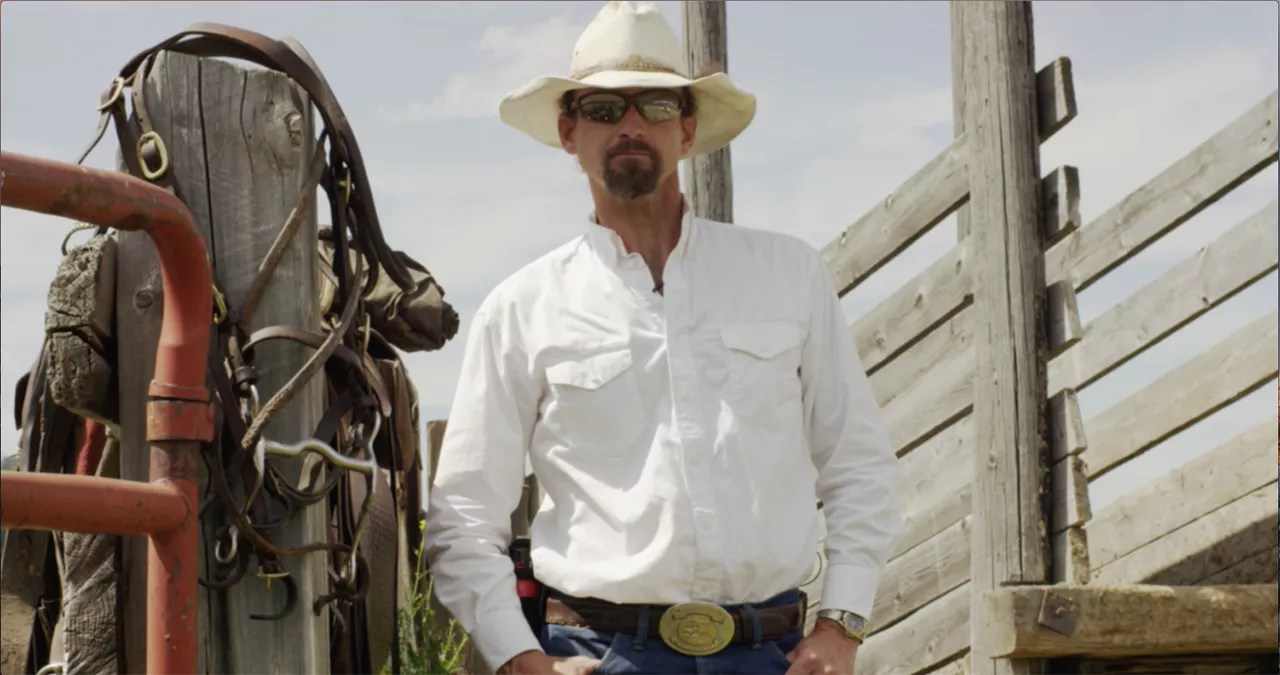
Matt Barnes is a rare rancher who welcomes wolves.
Courtesy of Matt Barnes
Matt Barnes, a friend of Edward’s, used to run a ranch between Gunnison and Montrose. He now lives in Dolores, in Montezuma County, where he works as a rangeland consultant for Shining Horizons Land Management and is a research associate for the Northern Rockies Conservation Cooperative. He considers himself one of the rare people with ranching experience in Colorado who supports wolf reintroduction.
“I worked in the northern Rockies for several years. I know that wolves do not deserve all the credit that they get for killing animals left and right,” Barnes says. “Generally speaking, most ranches in the northern Rockies have no conflicts at all, and of the few that do have some, there aren’t very many.”
Barnes says that management strategies such as “low-stress livestock handling,” which increases the animals’ natural herding instinct, minimize conflicts between wolves and livestock.
“I’m somebody who has actually ranched and does hunt elk in the mountains, you know, and I can see that we can have it all – ranching, hunting, outdoor recreation,” he adds. “There’s no reason we have to choose just one of those pieces and not the others. To me, it’s all part of our heritage as Westerners and Coloradans.”
Harvey strongly disagrees. He’s particularly concerned about hydatid disease, a form of parasitic tapeworm.
“I don’t think we should be having any wolves in Colorado, if they are bringing the hydatid disease, because of the incredibly high risk and danger that it presents to our entire citizenry,” Harvey says. “There are multiple reasons why I oppose bringing wolves into Colorado, but that is the most significant one.”
Phillips calls bullshit on that argument, noting that tapeworms have already been introduced to the state through domestic dog and coyote populations. In places like Isle Royale National Park in Michigan, hydatid disease is common because of the high density of gray wolves and moose. But thousands of people visit the park each year without suffering ill effects as long as they treat their drinking water, he notes.
“Hydatid disease is a problem driven by people who pick up wolf turds and then stick their fingers in their mouths,” Phillips says. “It’s not a problem that’s driven by gray wolves. This is a ridiculous argument meant to exploit peoples’ fears and anxieties about diseases.”
Instead, he points to the potential of wolves to limit chronic wasting disease, a fatal neurological disease similar to mad cow disease that’s spreading among Colorado’s deer, elk and moose populations, by taking out diseased prey. There are no scientific studies to confirm this claim, either.
“Voting to have wolves back in our Western mountains is an audacious act of hope.”
Voters will have to sort through all the charges and counter-charges, then decide the fate of the gray wolf in Colorado when they vote in November.
Edward is confident that the proposition will pass. A 2019 Colorado State University opinion survey showed that Coloradans overwhelmingly support the measure, including 79.8 percent of voters on the Western Slope. Still, Edward speaks with the anxious energy of someone who’s nearing a finish line that’s long seemed out of reach.
“I won’t take anything for granted,” he says. “It’s ours to lose.”
Still, he touts 114’s recent endorsements by the Global Indigenous Council, as well as the Rocky Mountain Tribal Leaders Council and the Great Plains Tribal Chairmen’s Association. “Our people are the original stewards of the land,” notes Gerald Gray, chairman of the Rocky Mountain Tribal Leaders Council and the Little Shell Tribe of Chippewa Indians. “Engaging in this initiative will provide us with input into decisions that impact the traditional territory of several of our member tribes whose perspectives haven’t been heard in Colorado since the 1860s.”
But not all of the indigenous community supports wolf reintroduction. The Southern Ute Council recently passed a resolution opposing “any effort to reintroduce or expand the population of gray wolves in Colorado.” The Ute Mountain Ute, another tribe located in western Colorado, have yet to take an official position.
Edward’s campaign recently received another major endorsement, from former Colorado governor Bill Ritter. “The wolf has been missing for too long,” Ritter said in an announcement of his position. “It’s time we followed the successful example set in Yellowstone National Park a quarter-century ago and bring back a key part of our natural history – the gray wolf.”
Edward is looking at not just natural history, but the history of the West – and the future of it.
“Voting to have wolves back in our Western mountains is an audacious act of hope,” he says. “Bottom line.”